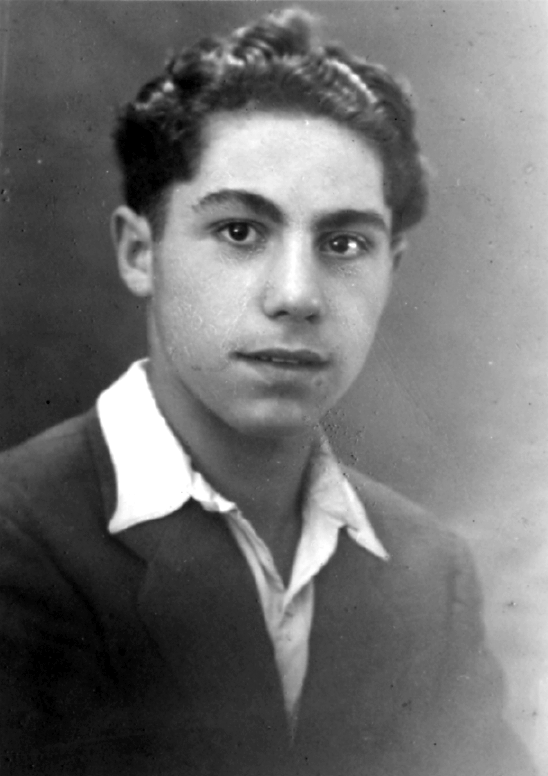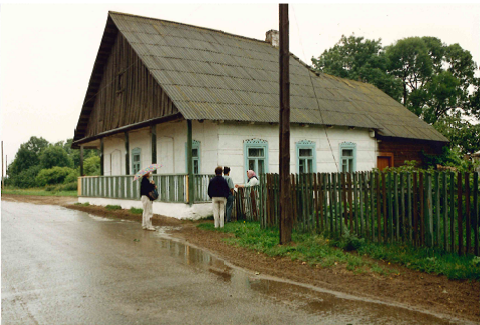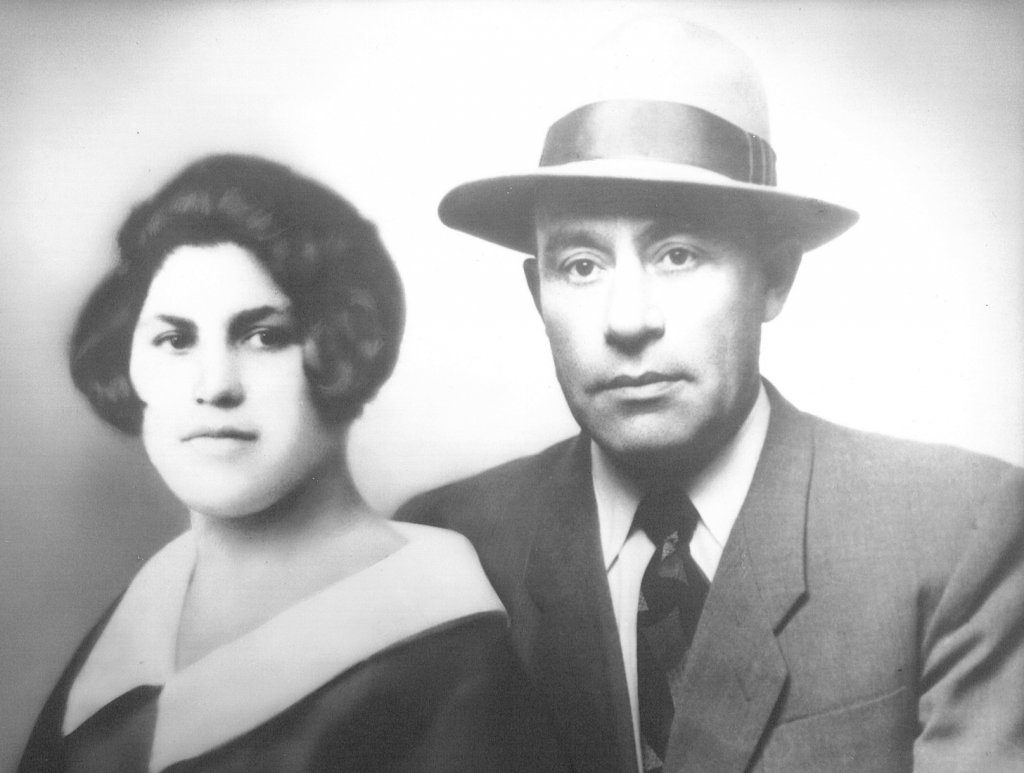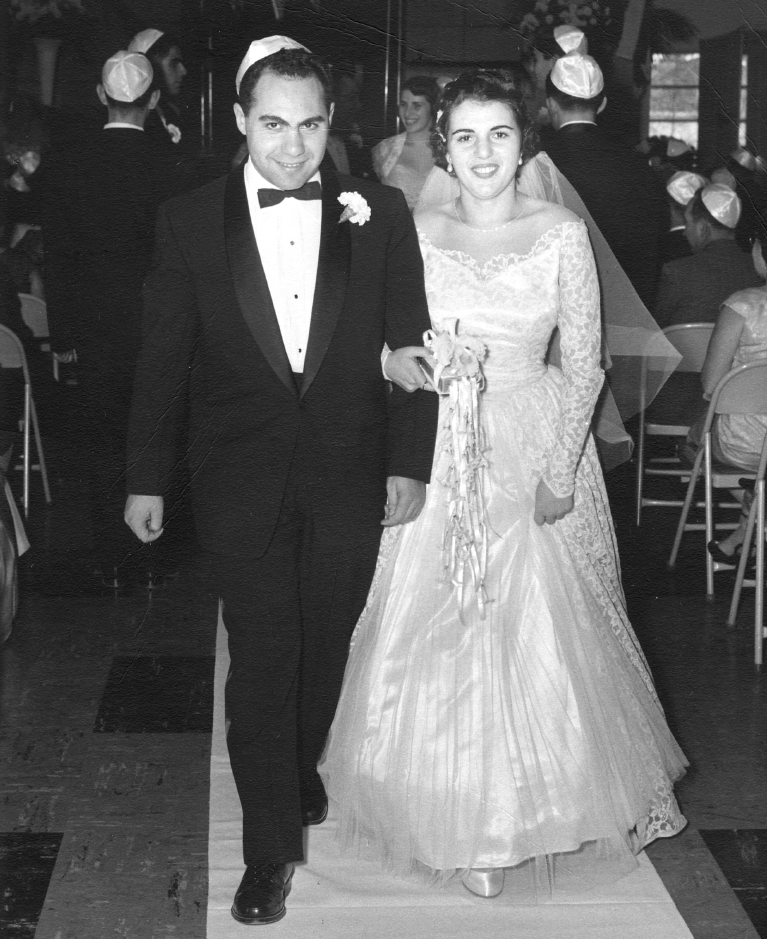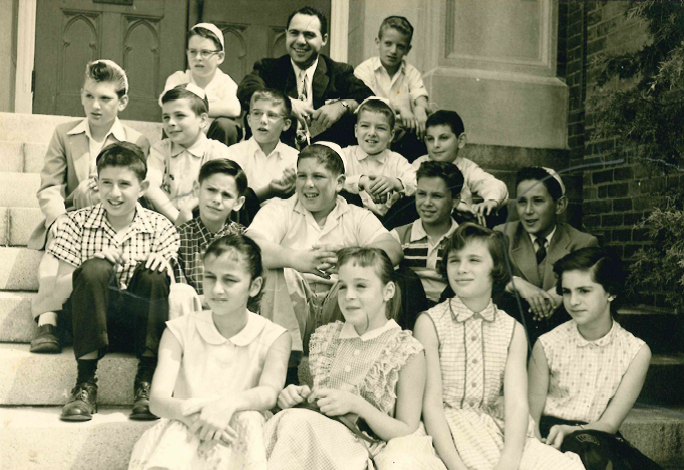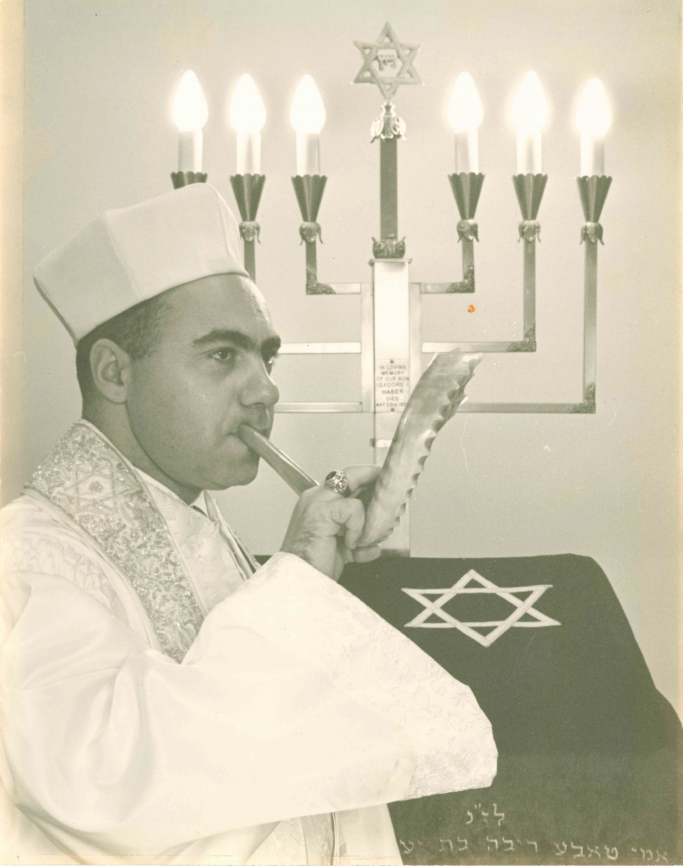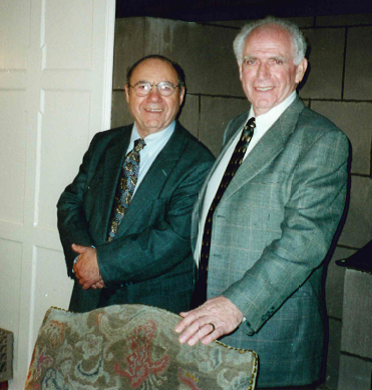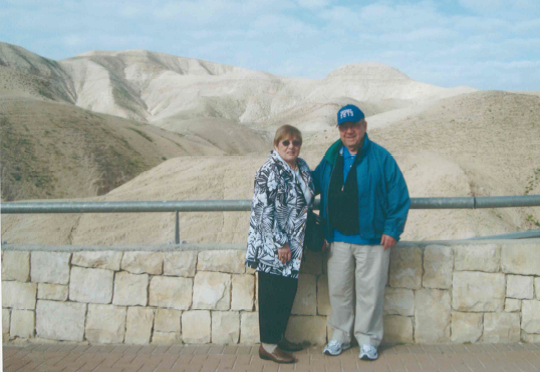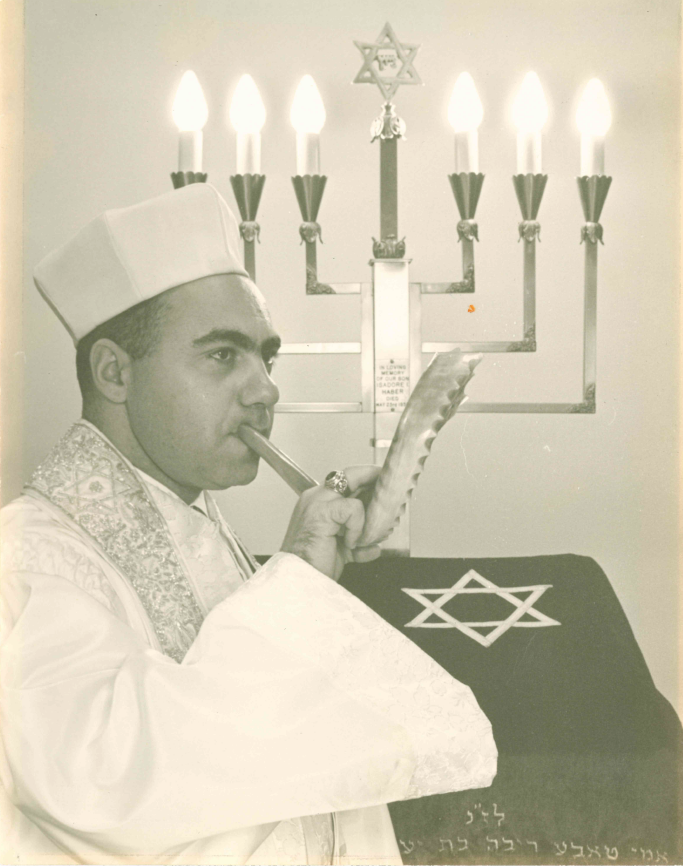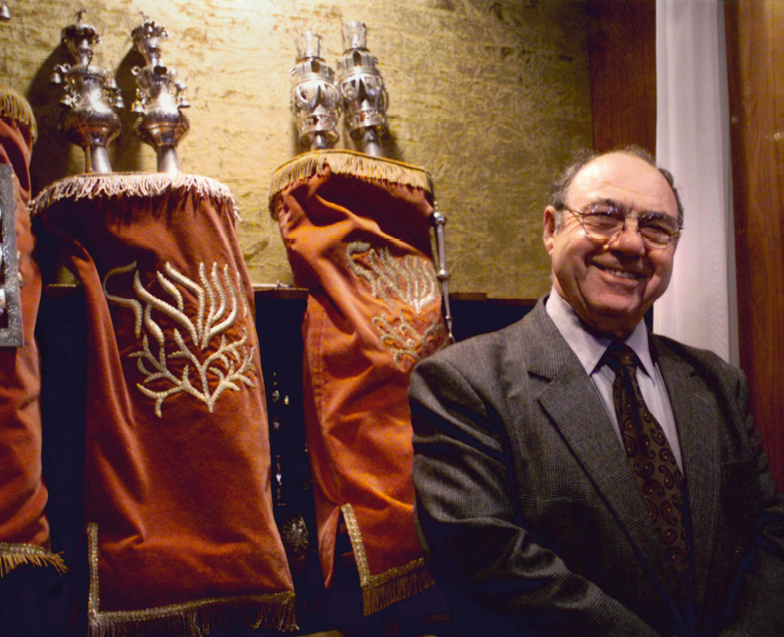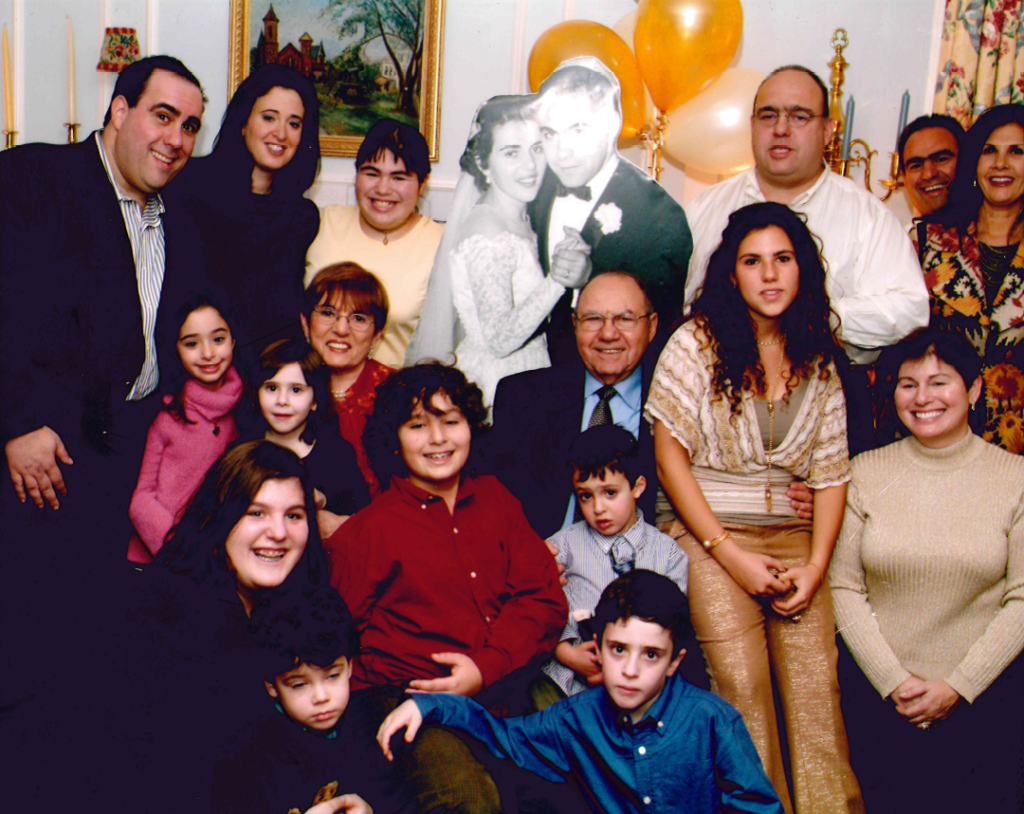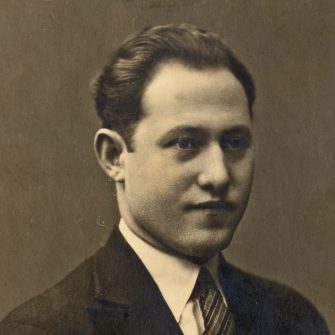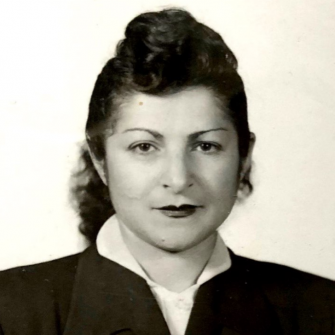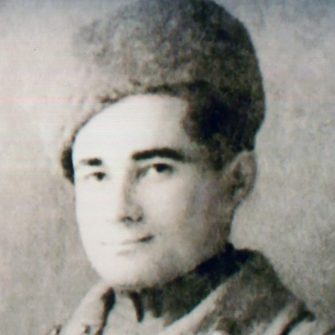Philip Lazowski was born on June 13, 1930 in Bielica, Poland. It was a fishing, hunting and agricultural community. The town trading posts had become a center for Jewish merchants, and in 1939 there were 600 Jews out of a total population of 1800. His father, Joseph, was a successful fisherman who exported to Lida and Vilna, while his mother, Chaya Gitel, owned a fabric store. He was the oldest child, with three younger brothers, Rachmil, Abraham, and Aaron, as well as a sister, Rachel.
On September 1, 1939, the Russians invaded Poland and quickly occupied Bielica until 1941. Eventually, the Germans targeted Bielica, despite being a small town, due to the three main roads which passed through it and its proximity to a nearby airport. In June, 1941, the Germans invaded Bielica, destroying the Lazowski family home and its contents . The family remained in the town, crowding into Philip’s grandfather’s house, along with two other families. Then, on November 10, 1941, the Jews in town were told to leave immediately and the family packed what they could and fled to the Zhetel ghetto (Dyatlovo).
In April, 1942, the Germans began massacring the Jewish population. On one of these nights, Philip was separated from his family and taken to the marketplace where the Nazis were dividing people into two groups, those who could work, and those who could not. Still a young boy, and realizing he would be put in the group facing certain death, he searched for a family to join that might get him placed into the surviving group. One woman, Miriam Rabinowitz, with two daughters of her own, took Philip in as her own, leading him through the line and saving his life.
On August 6, 1942, the Zhetel ghetto was liquidated. Philip and his siblings hid in a cave with their mother, while their father hid elsewhere. When hey came out of hiding days later, they could not find their father. Soon, they were captured by the Nazis and taken to a theater with the remaining Jews where they were scheduled for execution. There, Philip’s mother threw him from a second floor window in a desperate attempt to save him from certain death, while she remained behind with the younger children. Philip was forced to flee on his own, and managed to escape into the woods. He headed to Dworetz, where he hoped he would find his father.
When he reached Dworetz, Philip was reunited with his brother Rachmil. Within a few weeks, an uncle came to the camp looking for the rest of their family, and told Philip that his father was still alive and living in the woods about 15 kilometers from Bielica. That night the brothers escaped from the ghetto and entered the woods to reunite with their father.
After a few days of wandering, they reached the part of the woods where their father was hiding and were finally reunited. They lived in those woods for two and a half years with a group of other Jews, mostly married couples, women and children. They survived on information from the partisans, who had a camp about 40 miles away, and would stop by their hiding place periodically to inform them where the dangerous areas were and when they had to move. In the woods they had no radio or news of any kind, so any contact they had with the outside world came from the partisans. Sometimes they even brought the group food and supplies when they could. Philip’s father Josef often went on supply runs with the partisans. His uncle Mandel became a partisan himself but was killed in battle. His cousin, Avremel, fought as a partisan and survived the war.
In the summer of 1944 the Germans began to retreat. Philip and his family group left the woods, fearing it would now become a hiding place for the retreating Nazis. They returned to his hometown of Bielica, but found it mostly burned to the ground, and decided to move to Lida, where many other displaced Jews were gathering at the time.
After traveling around Europe searching for a place to live, and staying in Bad Gastein for two years, Philip, his father and brother left for America. They settled in Brooklyn in 1947, where they were reunited with cousins who were already living in the United States. Philip attended Brooklyn College and the Yeshiva University Rabbinical School. He became a rabbi.
In 1953, a chance conversation at a wedding led him to be reunited with the family who had saved his life in the marketplace during the war, taking Philip in and claiming he was part of their family. He went to visit them in Hartford, CT where he was reintroduced to Ruth Rabinowitz, the daughter of the woman (Miriam) who had saved his life. Soon after, Philip and Ruth fell in love and have been happily married for over 62 years. They have three sons, Barry, Alan, and David, and seven grandchildren.
Rabbi Philip Lazowski has been a rabbi and spiritual leader in the Hartford area since 1962, starting at Beth Shalom Synagogue, and then serving Beth Hillel from 1969-2000. He has been the Rabbi Emeritus of the Emanuel Synagogue in West Hartford since 2001. He is a member of the Rabbinical Assembly of the United States, and is Chaplain of the Connecticut State Senate, and of the Institute of Living at Hartford Hospital. For more than 55 years he has been the Chaplain of the Hartford Police. He has written over a dozen books, including his story of surviving the Holocaust, Faith & Destiny.
Read about Philip’s brother, Robert Lesser (Rachmil Lazowski), here: https://www.jewishpartisancommunity.org/partisans/robert-lesser-rachmil-lazowski/

